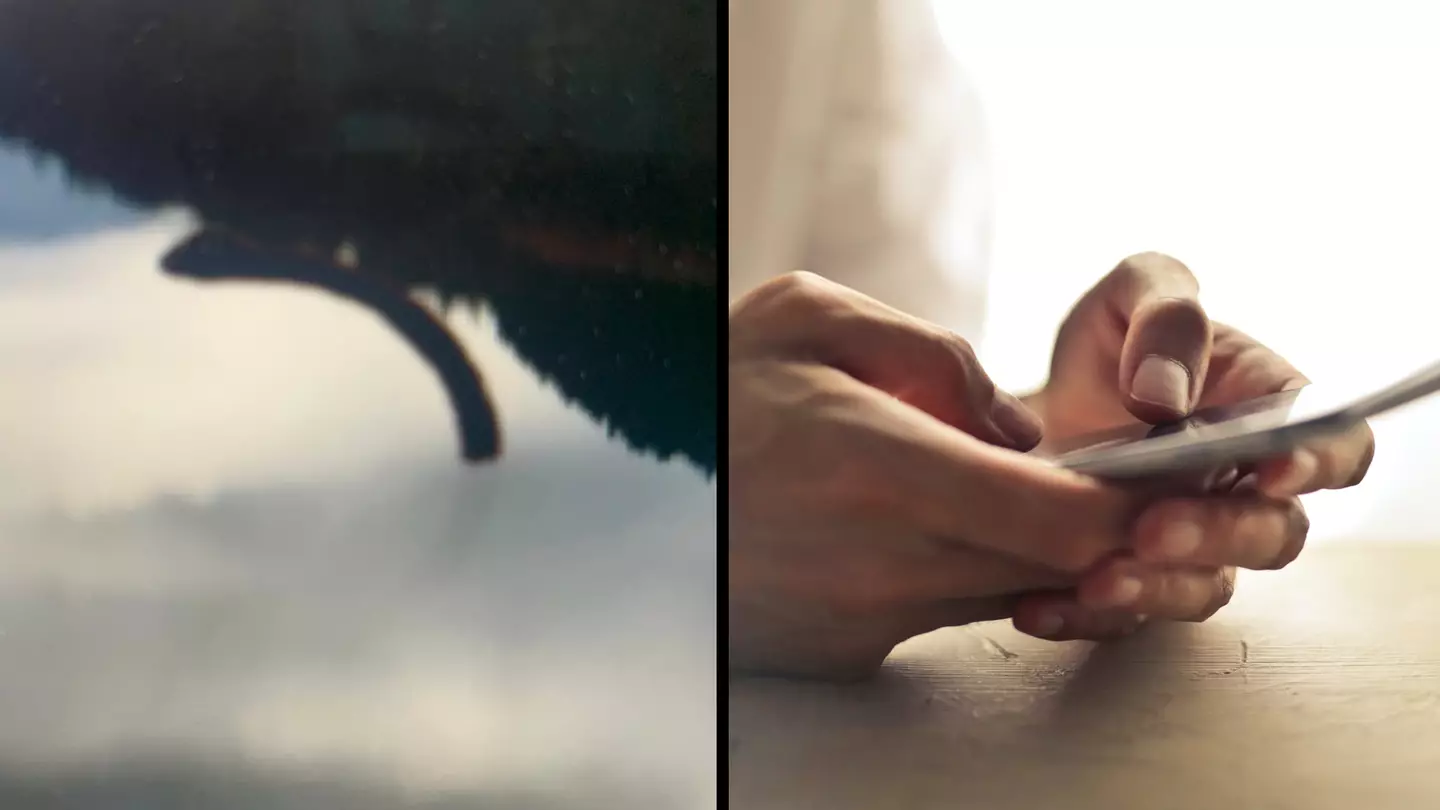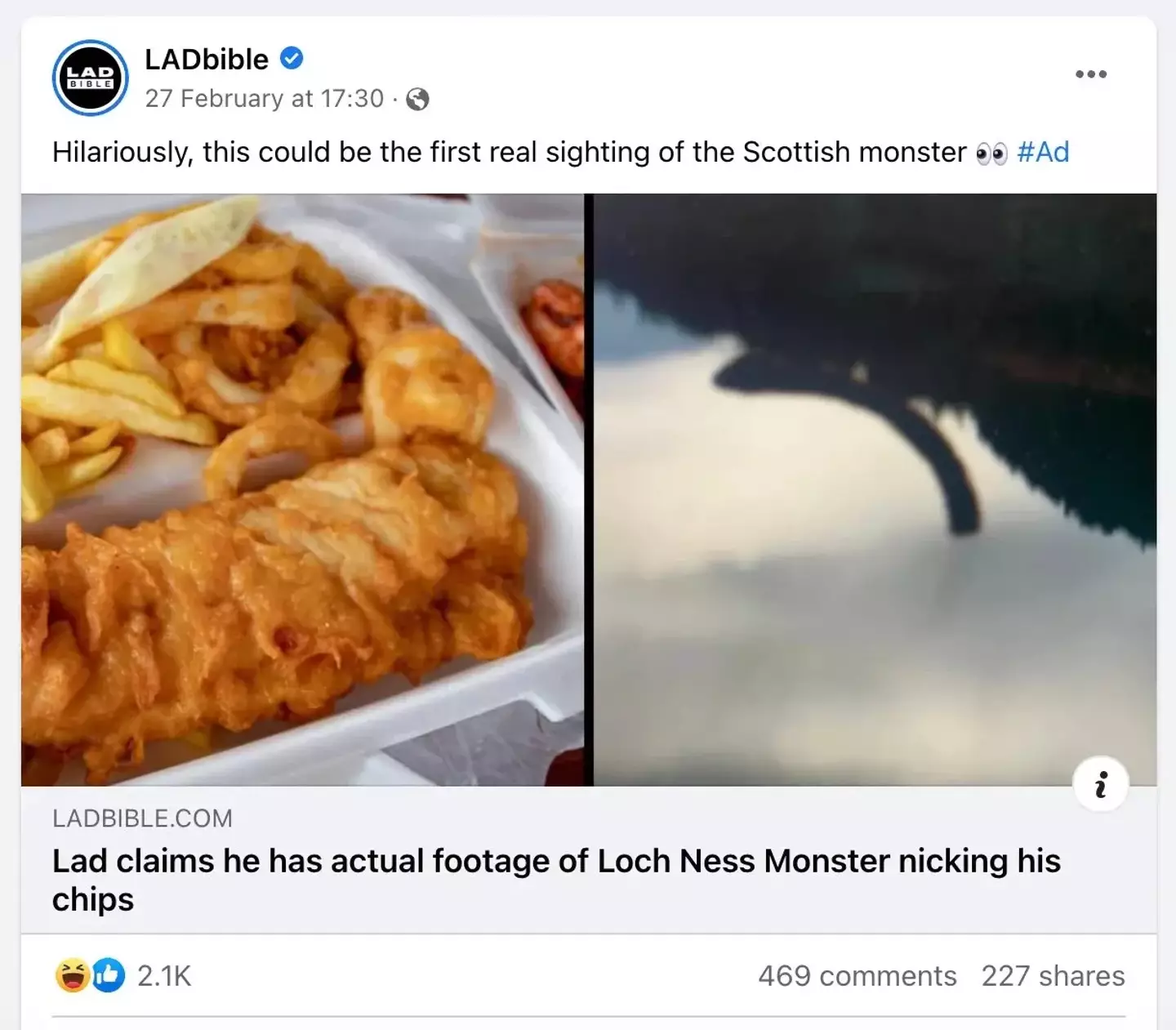
SPONSORED
We posted a fake story to Facebook. And it popped off. (People obviously love anything to do with the Loch Ness monster, even if it’s completely fake and absurd!)
Now we want to report on what we did and tell the story of the story.
If you were browsing social media last week, it’s likely that you’ll have come across a rather interesting story we shared. Does an article about Nessie stealing some chips ring any bells?
Well, if you were dedicated enough to read to the bottom of the page, you’d have realised the wild story about a couple snapping some footage of Nessie whilst on a trip to Scotland to celebrate their anniversary was totally…made up.
Some people didn't, however, and the article spread like wildfire, thus proving that a crazy headline and a blurry photo is enough to make viral news on social media platforms like Facebook.
In fact, our bogus story reached over one million people in just a week. 1,163,182 of you, to be exact.
Out of those one million-or-so, only 55,563 of you clicked on the article, meaning that almost 95% of people saw the headline without ever knowing it was a fake!
3118 of you took it even further and engaged with the post in one way or another; either through likes, follows or shares.
2100 of you gave it a cheeky like, others chose to grow the comments section to a whopping 470-strong thread. Many people cleverly called us out - some led others on and went along with the tale, even going as far as to add your own speculations, adding an extra sprinkle of misinformation into the mix.
But what’s really wild is that 227 of you willingly shared the article, either after reading it all and knowing that it was fake or skimming the headline and being completely oblivious to the fact that it was full-on fakery!

We’d be lying if we said we didn’t have a good laugh whilst pulling this information together, though.
There’s probably loads of you out there that are still wondering whether the mythical monster has its chips with or without salt and vinegar, like this one user who replied by standing up for our Ness: “ All I can say is if the monster is out there then leave it alone. The human race has messed up enough of nature's creatures and environments.”
Some didn’t even know who or what poor Nessie was, writing: “Googling Loch Ness Monster now. Why have I never heard of it, and I'm 46?!”
One clever cookie who suspected something fishy and finished the full article commented: “Excellent test of reading ability!” whilst one gutted Facebook user wrote: “I'm broken man I really believed”.
What about the super convincing thumbnail image of Nessie emerging from the lock? Yup, that was fake, too. Thanks to AI, you can generate anything these days - it’s actually pretty terrifying to be honest.
To summarise, there was no boat welder named Jason Pilkington, or a fiancée called Emily Weston, nor an adorable Border Collie called Jasper. And there certainly wasn’t a Loch Ness Monster lurking on the LADbible website last week.
We’re sorry to have led you astray…but there’s a really good reason as to why.
We’ve partnered with the government to help spread awareness of misinformation, showing just how fast false news can spread and how quickly a story can get out of hand. It can be dangerous and damaging - especially when used as ammo against someone or something.
It’s important to check the source of a piece of news for any outliers. If anything about the site or article looks fishy, think twice - it probably is.
The SHARE checklist shows exactly what to keep an eye out for when spotting a less-than-trustworthy article, from grammatical mistakes and spelling slip-ups to false figures and shifty-looking statistics.
So, next time you’re about to share something, it’s worth reading it properly and thinking about how many people could see it.
Featured Image Credit: Cabinet OfficeTopics: Social Media